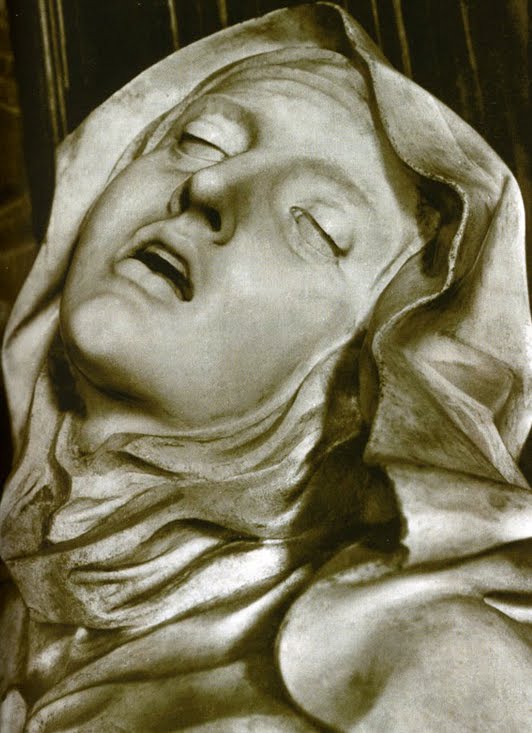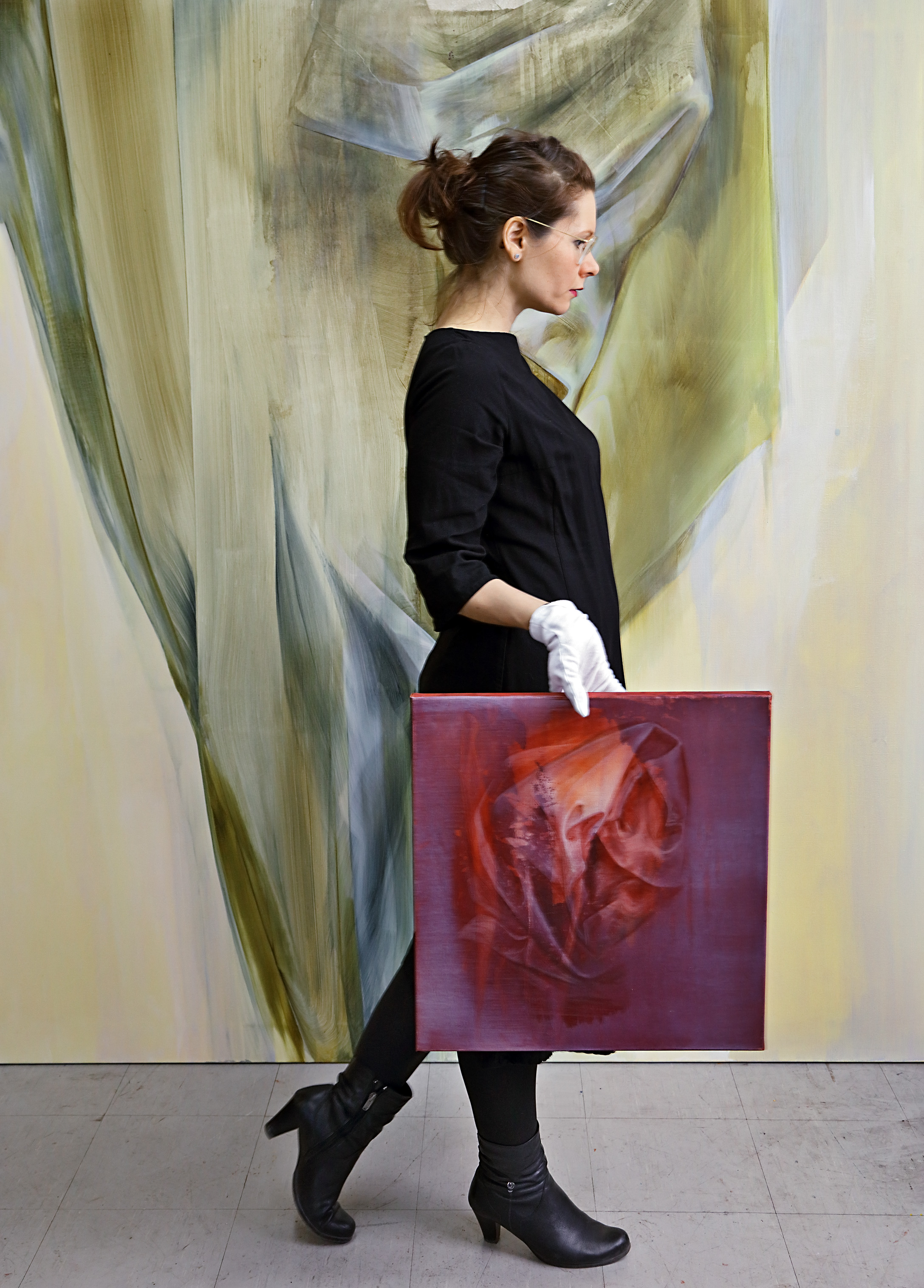A meaningful, deep sense of experience has always been an aspect of both religion and art. The two have in common a supernatural sphere, in which, for a moment, the experience of time and space is transmuted. Boundaries of the ego diminish, the will is dissolved. The interior is on the outside, and the exterior moves to the inside. I no longer am I. The skin is dissolved, the bones are exteriorized, the sexual organ is a cloth which I may take off and put back on. A bright, indefinite light abounds, having no apparent source. We’re in another space, a motherly ocean, breathtaking in its beauty, overwhelming.
To a large extent, art has replaced religion as the foremost field of spiritual experience. But can the sense of ecstasy produced by making and experiencing art be compared to its religious equivalent? When it comes to creative work, the difference between productive and destructive effort is subtle, and sometimes even beauty of the extraordinary kind fails to bring about peace of the mind. Too often has an artist capable of creating masterpieces also been capable of committing extreme acts towards herself and others.
The creative ecstasy is, in its negative form, much like a deadly spiral within which reality is suspended as if on a rubber band. The deeper down the spiral one goes, the more the band is stretched and strained. This state is an excruciating one, yet at the same time extremely stimulating. The sense of one’s body is the thing ultimately preventing one from losing touch with reality. The last resort of the desperate is punishing their body with violence, to starve it, to maul, pound and torment it. It’s only when the feet can feel the ground beneath them, when there’s a taste in the mouth and the beating of the heart has calmed down that reality is re-gained. It’s the physical, concrete reality of the act of painting which holds the mind and the body together and keeps the rubber band from breaking. The painted work has the power to hold a person together or – unless it’s stable – to break her apart.
While painting, any addition or removal of color, any variation of its hue, and the decision on where to start or end a line, are all physical and sensual facts, comparable to pain, pleasure or arousal. The painting is a body outside one’s body. It is not I, and yet it’s not something completely separate from me. At times, in moments of complete concentration, the ego subsides. A sensation, at once calming and painful, brings together both layers: the body and the psyche. I no longer know if I have a will. Maybe I am more true in a painting than I am within myself.
Still, these moments couldn’t induce me to cast away my egocentricity or my obsessive ideas. More likely, they’ll lift me up, only to leave me crashing down along with all the illusions I’ve taken in. Momentary highs and the deep lows in their wake all turn into a self-repeating pattern, a vicious circle. To bring a work into being requires ecstasy. But because it’s not in the nature of an artist’s ecstasy to focus itself on one point, and because of the enthralling pull of self-created beauty and one’s inability to remove oneself from one’s creation, the circle’s hold tightens.
The 16th century Spanish mystic, St. Teresa of Ávila has in her richly sensuous yet analytical fashion described commencing on a spiritual journey into the soul’s centre, entering a union with God, and finally, experiencing the death of the soul as such as it was before that union. Her book, called The Interior Castle, was originally written to serve as a spiritual guide for the nuns in her order. The book contains the most poetic and insightful description of religious ecstasy I’ve ever read. Teresa is very exact in distinguishing between different types of experience. Here we find devotion and consolation, where one is a natural and the other a supernatural experience. The joys of devotion are something which can be attained through meditation, so it bears understanding, Teresa writes, that they ”begin from ourselves and end in God.” On the other hand, ”consolations have their origin with God and we feel them in our nature and we rejoice in them as keenly, and more keenly still, than in devotions.”
Not just God but the devil too has something to offer to the soul on its search for ecstasy, writes Teresa. Today, the devil no longer is a tangible concept. To call a thing ’devilish’ is not the most credible characterization. More often something is explained from a psychiatric viewpoint and, just like everything else, the concept of evil is medicalized, and thus further abstracted. Ecstasy too is turned into psychiatry, explained away as abnormal brain chemistry and manic disorder.
It is true, though, that many of the religiously inspired ecstatic states end up being harmful rather than beneficial. According to Teresa, it’s the effect the experience has on the person herself and on her surroundings which tells us whether that experience truly originates from God or if it’s a satanic scheme or a factitious mental folly. ”There are also – and I have known there to be – people of weak mind and imagination, weak enough that they believe to see whatever they think about. “This is all rather dangerous.” As is said, a tree is known by its fruit.
The Divine Spirit is incomprehensible, something outside the boundaries of human understanding. Jesus Christ – in His humanity and physicality – is the object within which God is manifested as a comprehensible being. The Isenheim Altarpiece by Matthias Grünewald shows Christ, dying, wounded and bleeding, at the final moment of His suffering, as the world is succumbed by darkness and life has fled. The painting carries a message which isn’t limited to the depiction of God’s catharsis through self-sacrifice. By observing the body of the suffering Christ, and by relating to it we are inspired, through human pain, to understand the suffering Divine. Teresa of Ávila writes that “our life is concealed in Christ or God, which is the same thing, or even, Christ is our life.” Christ, through His suffering, is present in everyone who is suffering, and by compassionately understanding the suffering of others, we are understanding God. Thus it’s easier to comprehend the portrayal of Christ on the other side of the altarpiece, bathed in light, rising from His tomb, the halo of the Sun around His head, and the rainbow hues colouring the folds of His opened burial robe. A saint’s ecstasy always has a focus.
Translated by Juha Ilmari Nousiainen

